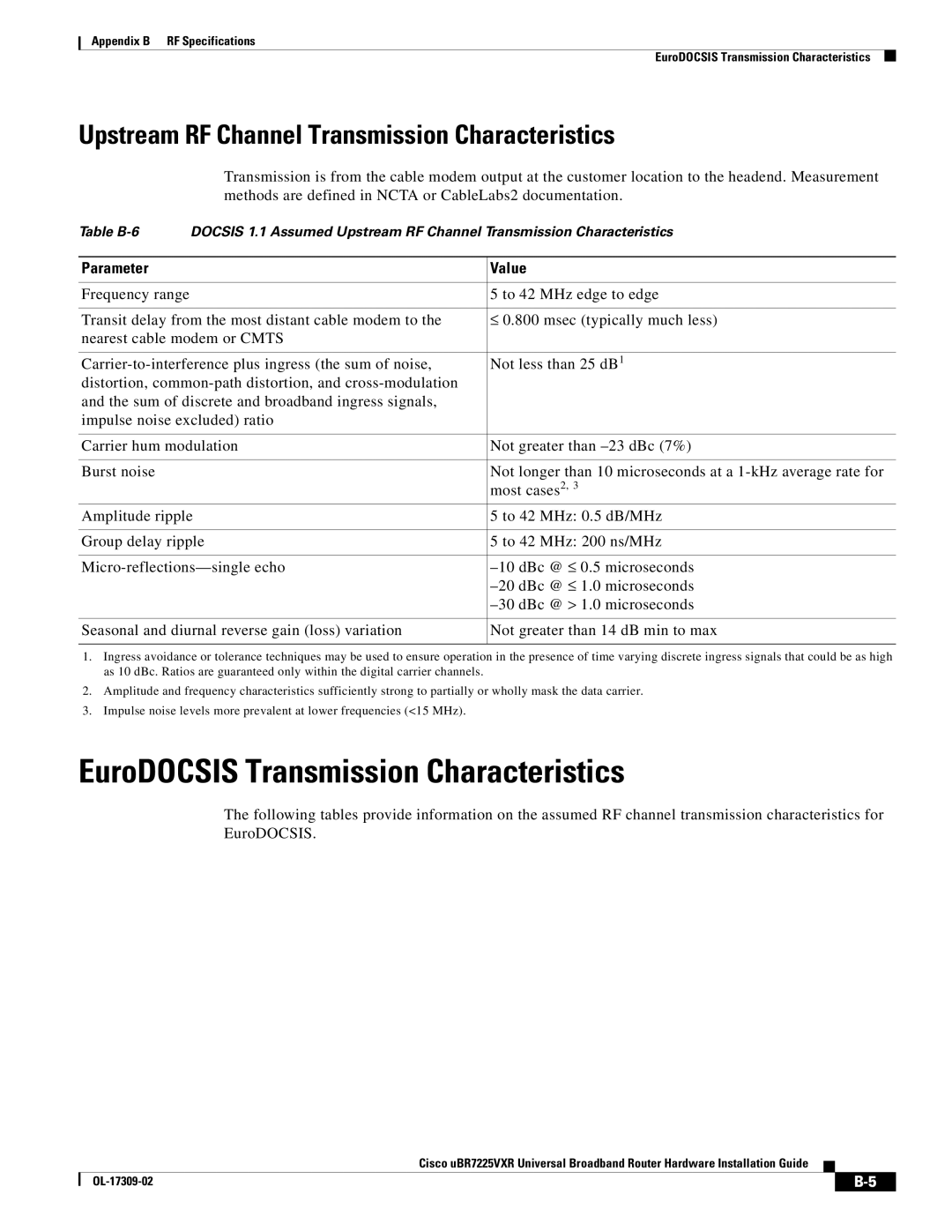
Appendix B RF Specifications
EuroDOCSIS Transmission Characteristics
Upstream RF Channel Transmission Characteristics
Transmission is from the cable modem output at the customer location to the headend. Measurement methods are defined in NCTA or CableLabs2 documentation.
Table
Parameter | Value |
|
|
Frequency range | 5 to 42 MHz edge to edge |
|
|
Transit delay from the most distant cable modem to the | ≤ 0.800 msec (typically much less) |
nearest cable modem or CMTS |
|
|
|
Not less than 25 dB1 | |
distortion, |
|
and the sum of discrete and broadband ingress signals, |
|
impulse noise excluded) ratio |
|
|
|
Carrier hum modulation | Not greater than |
|
|
Burst noise | Not longer than 10 microseconds at a |
| most cases2, 3 |
Amplitude ripple | 5 to 42 MHz: 0.5 dB/MHz |
|
|
Group delay ripple | 5 to 42 MHz: 200 ns/MHz |
|
|
| |
| |
|
|
Seasonal and diurnal reverse gain (loss) variation | Not greater than 14 dB min to max |
|
|
1.Ingress avoidance or tolerance techniques may be used to ensure operation in the presence of time varying discrete ingress signals that could be as high as 10 dBc. Ratios are guaranteed only within the digital carrier channels.
2.Amplitude and frequency characteristics sufficiently strong to partially or wholly mask the data carrier.
3.Impulse noise levels more prevalent at lower frequencies (<15 MHz).
EuroDOCSIS Transmission Characteristics
The following tables provide information on the assumed RF channel transmission characteristics for EuroDOCSIS.
Cisco uBR7225VXR Universal Broadband Router Hardware Installation Guide
|
| |
|
